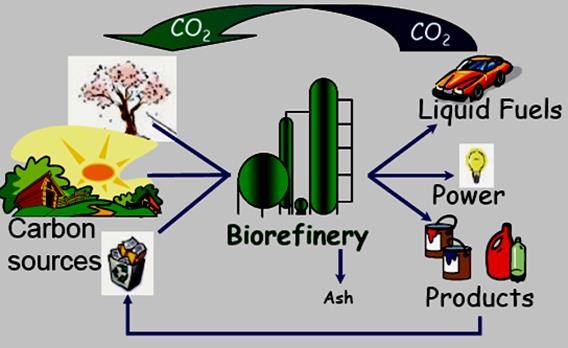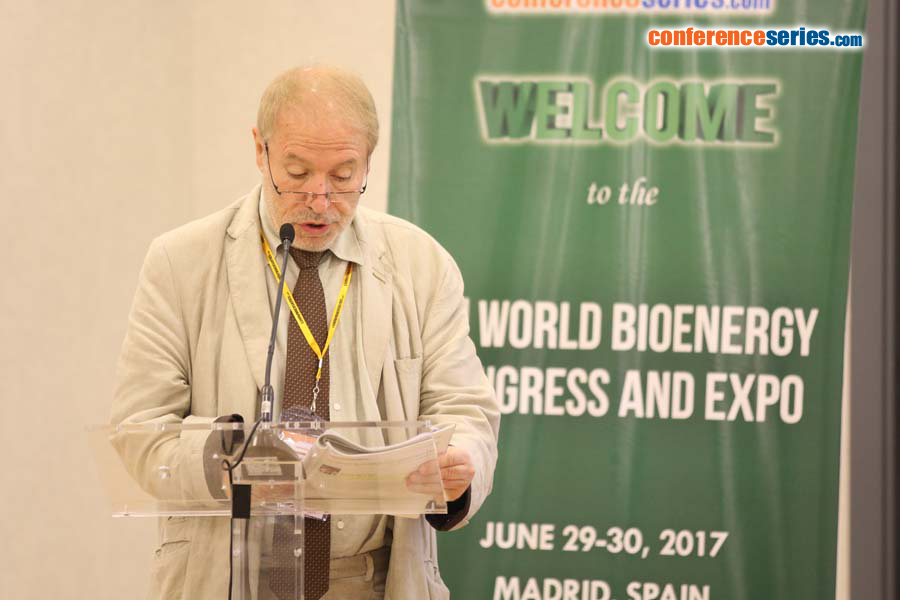
Lew P Christopher
Lakehead University, Canada
Title: Sustainable production of bioenergy and value-added products for the growing low-cost bioresource economy
Biography
Biography: Lew P Christopher
Abstract
The global trend for production of bioenergy and bioproducts from renewable resources is currently steered by three important drivers: 1) diminishing reserves of readily recoverable oil and fluctuating oil prices; 2) growing food and energy needs; and 3) increasing greenhouse gas (GHG) emissions. The global production of plant biomass, over 90% of which is lignocellulose, is about 2 x 1011 tons per year, with up to 2 x 1010 tons of the primary biomass remaining potentially accessible and available for bioprocessing. Current estimates indicate that the global energy demand will continue to increase and reach 653 exajoules (EJ) in 2020) and 812 EJ in 2035. At a price of $107 per oil barrel, the cost of the lignocellulosic feedstock (US $2.6/GJ at $50/dry ton biomass) is lower than natural gas ($3.3/GJ) and crude oil ($17.2/GJ). However, at the current low oil prices, the cost of lignocellulose conversion ($20/GJ) exceeds nearly twice that of fossil fuels, which necessitates further optimization of the biomass conversion routes. Lignocellulosic biorefineries are the ultimate integrated biomass conversion facilities that are nowadays viewed as one of the major economic pillars of the emerging global Bioeconomy. However, less than 10% of thel global fuels and chemicals production is currently biobased. This is mainly due to the fact that bioproducts are not yet cost-competitive to their petroleum-based counterparts. As the biomass feedstock comprises about 50% on average of the total production costs, it has now been recognized that low-value biomass and biomass waste streams can provide a cost-effective alternative to improve the economic viability of biorefineries. Among other, this approach offers two major advantages: 1) significantly lower bienergy production costs; 2) significantly reduce waste treatment costs, carbon footprint and GHG emissions. This presentation will discuss opportunities for valorization of industrial, agricultural and municipal biomass waste and related technological challenges that we need to overcome in our transition to a low-cost bioresource economy and biobased society.

Recent Publications:
1. Christopher LP (2013) Integrated Forest Biorefineries: Challenges and Opportunities. Royal Society of Chemistry, Cambridge, UK (ISBN978-184973-321-2).
2. Christopher LP (2012) Adding value prior to pulping: Bioproducts from hemicellulose. In: Global Perspectives on Sustainable Forest Management, InTech, Chapter 14, pp. 225-246.
3. Christopher LP, Hemanathan K, Zambare VP (2014) Enzymatic biodiesel: Opportunities and challenges. Appl Energy 119: 497-520.
4. Talluri S, Raj SM, Christopher LP (2013) Consolidated bioprocessing of untreated switchgrass to hydrogen by the extreme thermophile Caldicellulosiruptor saccharolyticus DSM 8903. Bioresour Technol 139: 272-279.
5. Upadhyaya B, DeVeaux LC, Christopher LP (2014) Metabolic engineering as a tool for enhanced lactic acid production. Trends Biotechnol 32: 637–644.


